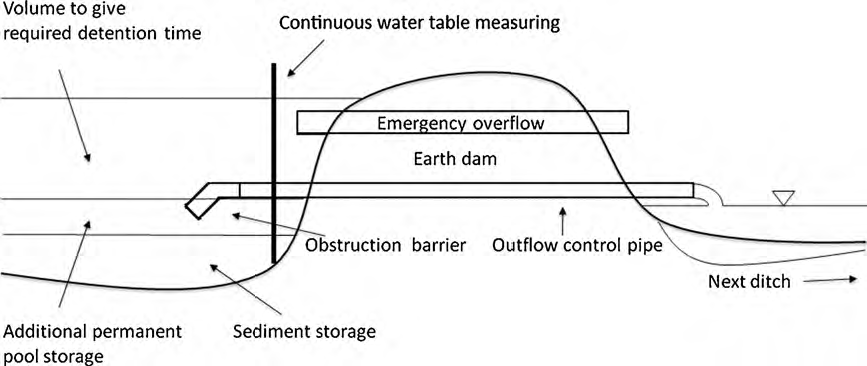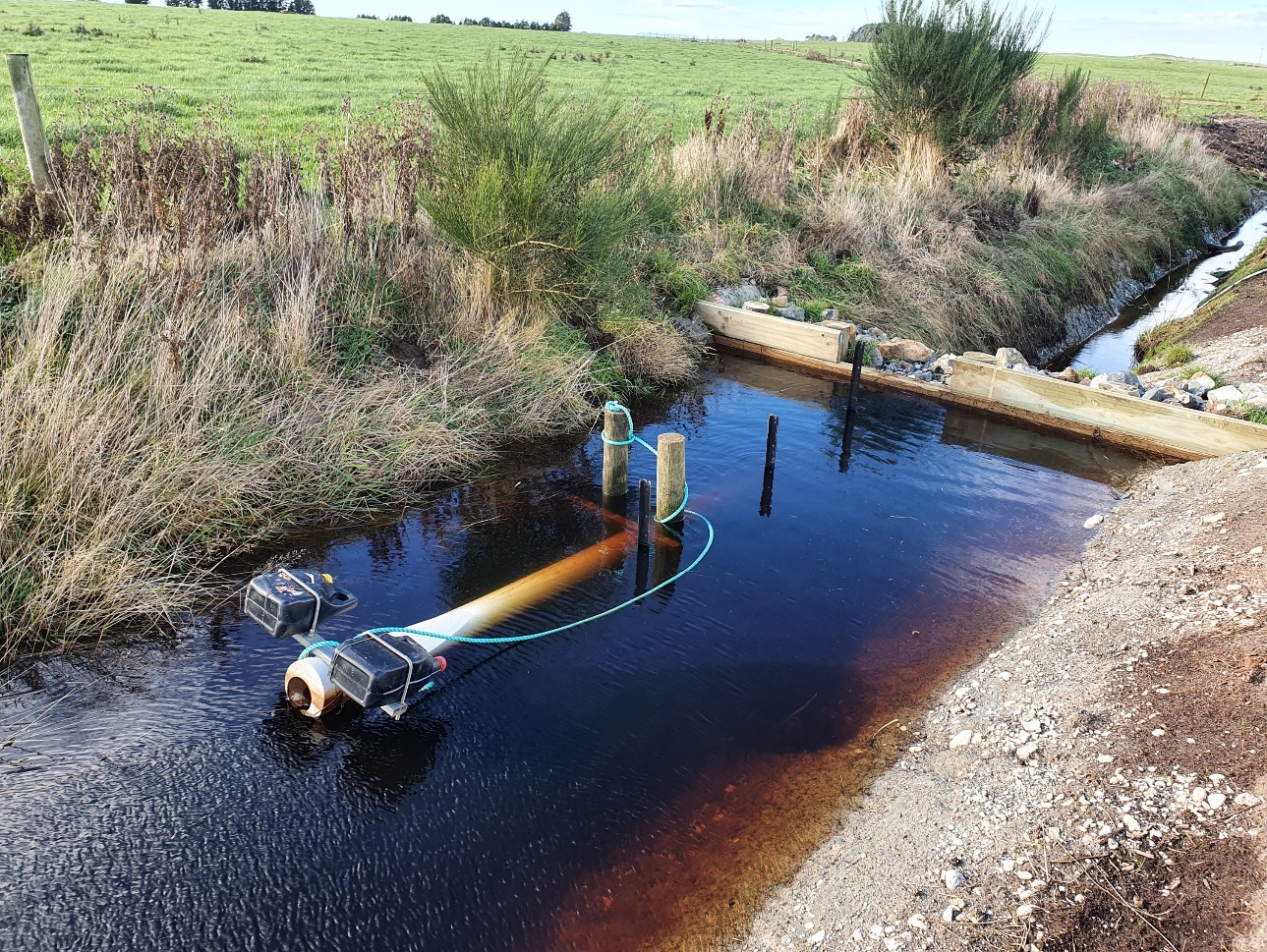Peak runoff control
What
Peak runoff control structures have been designed and engineered for various settings spanning a range of flow volumes and stream types; ephemeral (short lived after rainfall), intermittent (seasonal), and perennial (permanent) streams. The most common peak runoff control structure design involves flooding an area of ground upstream of the structure for a period of time (usually 3 - 5 days), before the water is released. This allows for contaminants and sediment held in suspension to settle out of the water column. Pipes then direct this water through the dam or detainment bund structure and out the other side. A spillway or release riser allows an escape for extreme floodwaters in an emergency.
Other examples are included in detainment earth bunds.

Why
Most particulate contaminants, such as sediment, sediment-bound phosphorus, and microbes (E. coli), are mobilised and enter waterways during rainfall events when overland flow (surficial runoff) occurs. Slowing the volume of water draining off the land from heavy rainfalls can help reduce the amount of contaminants lost. Runoff can occur either due to soils being too saturated to drain rainfall (saturation excess overland flow), or when the rainfall intensity exceeds the capacity of the soil to infiltrate water (infiltration excess overland flow). Saturation excess overland flow is common in winter months while infiltration excess overland flow can occur at any time.
Examples
Living Water – Waituna Lagoon, Southland
This research project is funded by Living Water (DOC/Fonterra Partnership) and being undertaken by Land and Water Science with the primary aim of determining the most effective areas in the catchment where peak runoff control structures could reduce contaminant loss. This is being achieved through connecting the physiographic science approach to identify risk prone areas at the catchment scale, and a hydrological assessment at the paddock scale for the placement and structure design. This information is combined to find the best locations for controlling contaminant losses through the construction of peak runoff control structures.
Outputs of this project include identifying where the structures could be placed, what the structures should look like, and different monitoring options to quantify their effectiveness. The primary aim of the structures is to slow the rate at which water leaves the landscape. By holding back the runoff, any contaminants suspended in the water settle out before it is slowly released back in to the stream. A secondary benefit is the reduction of stream power downstream, which reduces the potential of stream bank erosion adding more contaminants, as well as mobilising contaminants already settled on the stream bed (in the substrate/mud).
Currently Living Water are using this information to trial the structures in a sub-catchment of Waituna. The structures are placed in a drain within 100m of the start of the drain and have an upstream catchment area no more than 0.4 ha. The structures have currently been in place over winter and are currently being monitored with the effectiveness of each structure assessed to understand whether they are both individually and collectively making a difference.

Image Source: Living Water.

Image Source: Living Water.
References
Marttila, H., Tammele, S., and Kløve, B. (2010). Sediment delivery and erosion processes in drained peatlands. In International Symposium on Sediment dynamics for a changing future June (pp. 14-18).
Ballantine, D. J., & Tanner, C. C. (2013). Controlled drainage systems to reduce contaminant losses and optimize productivity from New Zealand pastoral systems. New Zealand Journal of Agricultural Research, 56(2), 171-185.